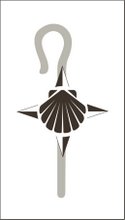What makes Aleppo unique is its blend of Ottoman, Armenian, Jewish and French influences, owing to its historic position at the crossroads of empires. Bright-green domed mosques rub shoulders with Armenian cathedrals, Maronite churches and even a synagogue. Its setting amid rolling plains dotted with olive groves and the ruins of dead cities calls to mind a scene out of “One Thousand and One Nights.”
Aleppo may also boast the Arab world’s most impressive souk, a sprawling network of noisy corridors and cramped stalls where, for the past seven centuries, every kind of spice, sweet, soap, silk, dried fruit, carpet, metal, jewelry and water pipe imaginable has been sold. If you’ve ever wondered what a slab of camel meat looks or smells like, just wander through the butcher section. And unlike bazaars in Istanbul or Cairo, Aleppo’s functions as an actual market, not a tourist trap.
The souk is a city unto itself. Old looms turn yarn into splashy-colored textiles, parrots squawk in cages and deific pictures of Presidents Bashar (current) and Hafez (former) al-Assad are everywhere. A buffet of scents — the sweet perfume of smoke, the laurel-like smell of olive soap — follows visitors. Sure, the incessant barking of “Welcome!” and “Where you from?” gets old quickly, but a few shopkeepers at least throw in some humor. “Very expensive. Very bad quality,” one beckoned to me with a wink.
The best time to visit Aleppo’s Old City may be in early morning, when the stalls are shuttered and their inlaid, ornately carved wooden doors become visible. At this hour, the city’s ruddy cobblestone streets go silent, save for the Arabic pop music blaring from a nearby barbershop, and the floral patterns of the enclosed balconies come into focus.
After the obligatory visit to the Grand Mosque, peek into any of the black-and-white stone archways to check out the courtyards of Aleppo’s khans (inns), full of jasmine and citrus trees. Or climb the stone bridge to the citadel, an imposing hilltop fortress completed in the 13th century. Buried within its ruins are a palace, hammam (bathhouse), temple, dungeon and two mosques. But the best reason to visit is the view of Aleppo’s minaret-dotted skyline.
Pace!B


No comments:
Post a Comment